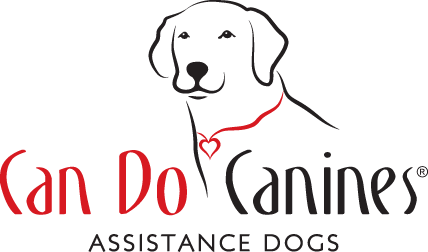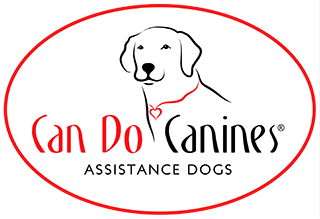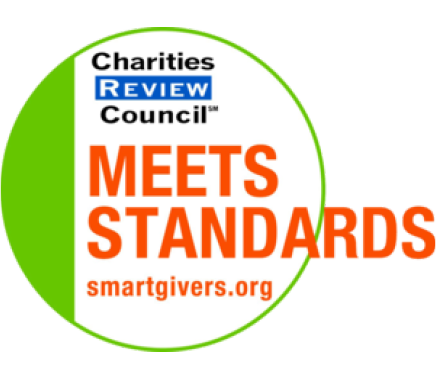First Introductions
Calm First!
Whether it’s introducing a new dog to your immediate family, or whether you’re introducing your existing dog to visiting relatives, you need a plan if children are involved!
The first thing to look at is how both the dog and the child are responding to each other when at a distance. The dog should be on a leash and/or behind a baby gate and the child should also be instructed, and helped, to remain at a distance.
With both dogs and kids, you will want to evaluate their body language. Do either seem nervous? Over-the-top excited?
Before allowing anyone to greet, you want both parties to be relatively calm and able to follow instructions. This may mean going for a walk together to keep everyone moving before up close introductions are allowed. Or it could mean that the dog remains on the other side of a baby gate for a while. Feel free to give the dog a stuffed Kong to help them relax or toss them treats!
If either dog or child is nervous, DO NOT LET THEM GREET! Let both the child and the dog coexist in separate areas for however long it takes!
Greetings
When both the child and the dog are relatively calm, you can look at allowing direct interaction. If there is more than one child, introduce each one separately.
Consider having the child sit on a chair so that their face is not at direct level with the dog.
Don't force the interaction (like with luring the dog to the child). Let the dog approach at their own pace if they are uncomfortable. Much to the disappointment of the child, this might mean no greeting happens.
Keep the dog on leash to easily be able to redirect the dog as needed. Bring out your treats and reward lots for the dog keeping most of their focus on you. Every 3-5 seconds, call the dog to move away from the child to prevent excitement from building up too much with both the child and the dog. You can release back to “say hi” if both child and dog are still able to be calm and want to interact.
The goal is not to magnetize your dog to children or magnetize the child to dogs. In both cases, you want quick, calm greetings and moving on.
Living with Dogs and Children
If the dog and children will be living under the same roof you will need to set up some ground rules for both the dog and the child for more long term interactions.
Management
Because dogs and children both take a lot of work, you will need to use management to prevent unwanted interactions until routines come into place. This may mean utilizing baby gates, crates and xpens to separate the dog from the child while both are learning how to coexist! Most xpens can be taken apart and used as a long gate to divide a room into two, or extra wide baby gates can be used.
You can set up a comfy dog bed and some bones in the dog’s area to teach them how to relax even if physically separated at times. Remember to take out any bedding and toys if the dog is to be left unsupervised.
Rules for Children
With a toddler or older child, they can start to learn rules of interaction with the dog. The most important rule is learning to give a dog space. The dog’s kennel and dog beds should be off limits to children, even if the dog isn’t actively using it at that moment.
When the child wants to interact with the dog, help teach the child how to invite the dog to approach them versus the child approaching the dog. Encourage them to have a routine such as patting their legs and turning to the side as they invite the dog over. Teach them what it looks like if the dog says “not right now!”
Encourage light petting of the dog’s shoulders, back and chest and explain how there are some body parts dogs do not like being touched, such as their head and tails. Dogs should also never be used as pillows, and should not be hugged (Autism Assist Dogs may be the exception to this, as they are carefully vetted to work and be comfortable cuddling with children.)
A 3-second petting rule and then stopping to “ask” the dog if they want more is also a great rule to have in place. Anytime the dog moves away, they need to re-invite the dog back over and listen if the dog says “not right now!”
If the child is feeling bothered by the dog, teach them to fold their arms and be a tree while they ask an adult for help. The child should not attempt to push the dog away as this often is seen as a fun game for the dog!
Chase?
The main rule of play in the yard or house should be never chase the dog! The dog should always feel safe and able to create distance!
Rules for Dogs
While the dog is learning that they have a safe space to retreat to their kennel or dog bed, they also have to learn how to give the child space.
Have a no-licking rule and work on redirecting your dog away from being in the child’s space. You may need to have the dog drag a leash inside the house to easily redirect them. When the child is running around and generally being exciting from the dog’s perspective, you will need to either put the dog back behind a barrier or bring out your treats to work on the dog’s focus.
Remember that the dog is still learning too! It will take a lot of consistency and time for things to start to come together.




